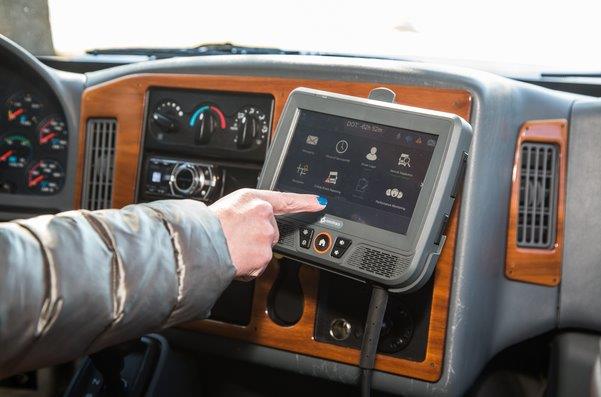While electronic tools have been able to monitor compliance with Hours-of-Service (HoS) rules since the early 1980s (remember the Rockwell Tripmaster?), it seems some truck drivers and fleets still haven’t adjusted to the technology.
Challenges even remained after the U.S. mandated electronic logging devices (ELDs) in December 2017. A lack of third-party certification processes left some of those tools with built-in loopholes, meaning they were hard to certify for Canadian service when a different mandate emerged on this side of the border.
Anyone who was using a device not approved for Canada had to adopt yet another digital tracker and relearn how to use the tools all over again.
To be fair, many fleets operating solely in Canada are just now feeling their way through the maze. So, in these early days of ELDs in Canada, we spoke with a couple of fleet safety compliance auditors to identify common mistakes made by truck drivers and fleets alike.
Several common themes and misconceptions emerged from the auditors’ compliance reviews:
- Office staff believe they no longer need to audit or review drivers’ logs when using ELDs.
- Drivers new to ELDs operate the same way they did with paper logs — with adverse consequences.
- Operations staff and drivers alike don’t understand HoS rules.
- Drivers think they can make driving hours disappear by simply failing to log in to the ELD.
- Fleets mistakenly omit information from required fields.
- Maintenance staff often don’t log in to the ELD when moving trucks for service.
Maybe your fleet is in one of these boats, too?
It’s not a driver management system
Some fleets mistakenly assume that, with ELDs, they no longer need to monitor whether truck drivers comply with Hours-of-Service rules.
Kris Fulgham, transportation compliance consultant with Edmonton-based CayCan Safety Consulting, certainly found some operations that believed the ELD would handle such issues and report any violations.
“That’s a recurring problem that I see everywhere,” he says, referring to audits he conducts. “The ELD is not a violation monitor. It’s not a good single source for knowing the truth. If drivers are putting in bad data, you’re gonna get a bad violation report.”
He says regulations still require supporting documents to verify driver logs, even though ELDs use GPS to track locations. Those supporting documents include receipts, payroll records, and other physical records that can corroborate what the ELD reports.
“If the alerts haven’t been set up properly on the back end, the right people might not see them.”– Robert Desmarais, Hub International (Quebec)
Those who drive oil field service trucks to sites where they work on other equipment also need to log such time as on-duty/not driving, he adds. “If the driver logs off-duty instead, the ELD is going to miss all the hours that we falsely logged. And the carrier won’t see a violation unless, in this case, they compare the hours logged with what the workers were paid. If there are inconsistencies, it’s a violation.”
In other cases, fleets can miss alerts because of the way systems are integrated.
“I have seen a few companies that rely entirely on the system to trigger alerts and warnings, but if the alerts haven’t been set up properly on the back end, the right people might not see them,” says Robert Desmarais, transport compliance specialist, Hub International (Quebec). “If nobody gets an alert, everybody thinks everything is running just fine — until I show up.”
Desmarais believes some fleets are under the impression that ELDs will solve a lot of their driver management problems through automation. But fleets must still check that the driver has available hours before dispatching a load.

Unassigned driving
Then there’s the challenge of trucks that move without an assigned driver.
Sometimes the problem is as innocent as drivers who forget to log off at the end of a shift, or those who fail to properly note a change of duty status. Sometimes the “forgetfulness” is a deliberate move to squeeze in more driving hours by having a mysterious unassigned driver appear behind the wheel at convenient moments.
It isn’t hard to manipulate an ELD to get through a roadside check, he says. But drivers and carriers who are tempted to continue with such illegal behaviors will be caught.
“In an audit, everything is visible, and the fleet has to account for those excess driving hours,” he says. “That’s a lot harder to get away with.”
The other problem with unassigned driving is far more common and harder to resolve. It can be a nightmare to retroactively fix situations in which one or more of the drivers who share the same truck fail to enter driving and off-duty/not-driving time.
“It’s like they just magically appear there [and] drive the truck for 20 minutes.”– Kris Fulgham, CayCan Safety Consulting
Fulgham has seen managers try to take a shotgun approach when assigning such driving time, only to find that the work was assigned to drivers in the midst of their days off.
“They accept a 25-minute driving time, like 25 kilometers of driving, but they’re 150 kilometers away from the terminal,” he says. “[It’s] like they just magically appear there [and] drive the truck for 20 minutes.”
Yard moves
In other cases, companies set up profiles called “yard moves” or “mechanic” to account for mechanics who drive a truck around a fleet yard or travel to an outside shop. But then they assign all unidentified driving to that profile – an approach that goes against Canada’s technical standard, Fulgham notes.
“Every driver account has to be a unique individual tied to a valid driver’s licence,” he explains. “If you create a dummy account to handle unidentified driving, you’re in violation because you’re falsifying your records.”
There’s no easy answer to that problem short of creating profiles for everyone in the company who could ever conceivably find themselves behind the wheel. Fulgham says he has yet to see how enforcement will handle the issue.
“Right now, we’re in this weird stage where we’ve mandated that all of these hours get tracked, but no regulator that I’m aware of in Canada has actually put their toe in the pool to test the water and say whether they’re going to care about that or not,” he says.

Incomplete or incorrect data
Another violation falls under the “form and manner” category that many people believed would all but disappear with ELDs. There are a certain number of fields that must be completed on each record, including the driver’s first and last name, unit numbers, carrier name, and home terminal address.
Fulgham’s audits reveal tons of mistakes here. He says fleets often use an abbreviated name for the company, or a “popular” name rather than the carrier’s complete legal name. For example, they might use “JP Trans,” rather than “Jim Park Transport.” Some operators with numbered company names have given their companies a “doing business as” (DBA) name.
That’s not the official company name as it appears on the official records.
“Form and manner violations have jumped because people setting up an ELD for the first time are setting them up wrong,” says Fulgham. “Make sure you pre-populate the ELD with the correct data. These are real violations, and they will multiply exponentially with the number of trucks you operate and the number of days the violation is allowed to continue.”
Fulgham says he’s aware of at least two ELD brands that will allow a trip to continue before all those fields are filled – and he’s informed the certifying body as well as Transport Canada. Both parties said they’re looking into it.

Hours-of-Service training
On top of everything else, truck drivers and operations staff apparently still need general Hours-of-Service training. Both Fulgham and Desmarais have seen many examples of drivers logging into the ELD the same way they did on paper, which gets them into all kinds of trouble.
Desmarais, for example, has seen many cases where drivers do not log their full 10 hours off-duty before coming back on duty.
“That could be adjusted with old paper logs, but an ELD creates a permanent record of the error,” he says. “And an error like that forces the driver into another full off-duty period.”
Fulgham has a client who was “double-dipping” his off-duty periods, taking nine hours off over midnight rather than 10. Each day had 10 hours off, but not 10 qualifying hours, he stressed.
“The client was logging that off-duty time incorrectly and didn’t realize it. He thought the ELD was wrong and kept driving in violation,” Fulgham says.
Relying on alerts
There are many scenarios where a lack of understanding around HOS can get drivers and fleets into trouble. Drivers can rely on the ELD to give them alerts when they are close to the end of the driving hours, but they have to act on that advice. Continuing to drive, such as during the search for a parking spot, simply isn’t allowed.
Operations staff also need to recognize that trips which could be completed on a paper log might be impossible or impossibly tight when using an ELD. In those cases, there’s no work-around on the ELD. Dispatchers in such situations must reconfigure the trip so that it can be completed legally. If operations staff weren’t aware of the problem because drivers kept making the problem disappear, they will become painfully aware of the situations with ELDs.
ELD malfunctions
ELD vendors should provide training about how to use their respective devices, too. Fleet operations and drivers alike need to know how to use the devices — even in the rare case where an ELD malfunctions. What happens then?
“There’s a procedure for that,” Desmarais notes. “The driver must report it, and the carrier has to create a case number for a reference. That way, if the driver is stopped a second time, he or she will have a reference to support the time when the device stopped working. Otherwise, it’s your word against the officer’s.
“The company needs to have several people on staff who can handle those problems and others. You can’t have just one or two people trained,” Desmarais cautions. “What if that person is on days off, or maybe has left the company?”
It’s still early days for ELD enforcement in Canada, and there are bound to be hiccups. Chances are that a department of transportation official has yet to knock at your door. But it might be worth having an auditor look at how you are managing the transition. The fees for such a service will be a lot less than the costs that come after chalking up tons of inadvertent violations.


